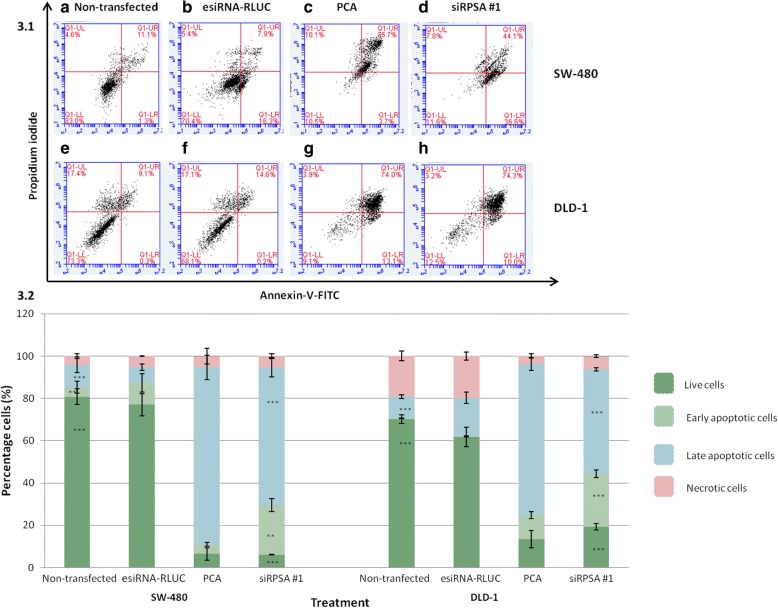Fig. 3.
3.1 Apoptotic induction in early (SW-480) and late (DLD-1) stage colorectal cancer cells post siRNA transfection. It was revealed that most of the non-transfected a) SW-480 and e) DLD-1 cells fall in the lower quadrant (Q1-LL) which is known to represent normal live cells. b) and f) SW-480 and DLD-1 cells treated with negative control esiRNA-RLUC mostly appeared in the lower quadrant indicating live cells. c) and g) Positive control PCA, revealed that most cells were found in the upper right quadrant (Q1-UR), representing SW-480 and DLD-1 cells undergoing late apoptosis, respectively. d) and h) Cells transfected with siRPSA #1 resulted in 36.6% of SW-480 cells (d) and 10% of DLD-1 cells (h) undergoing early apoptosis, which is depicted in the lower right quadrant (Q1-LR); while 44.1% of SW-480 cells and 74.3% of DLD-1 cells underwent late apoptosis. This indicates that upon treatment with siRPSA #1, a total of 80.7% of SW-480 cells and 84.3% DLD-1 cells underwent apoptosis. 3.2 Bar graph illustrating apoptotic induction in early (SW-480) and late (DLD-1) colorectal cancer cells after siRNA transfection. This graph displays an average of three experiments completed in triplicate. Percentages for each quadrant were pooled together and compared to one another for both cell lines. It was found that SW-480 and DLD-1 cells had a significant increase in early and late apoptosis when treated with siRPSA #1, in contrast to cells that were not transfected, and both cell lines were seen to undergo more late apoptosis than early apoptosis. SW-480: ***p = 8.92029E-06 (live), ***p = 0.0001 (early apoptosis), **p = 0.002; DLD-1: ***p = 1.97127E-05 (live), ***p = 3.72195E-05 (early apoptosis), ***p = 1.08522E-06 (late apoptosis)

